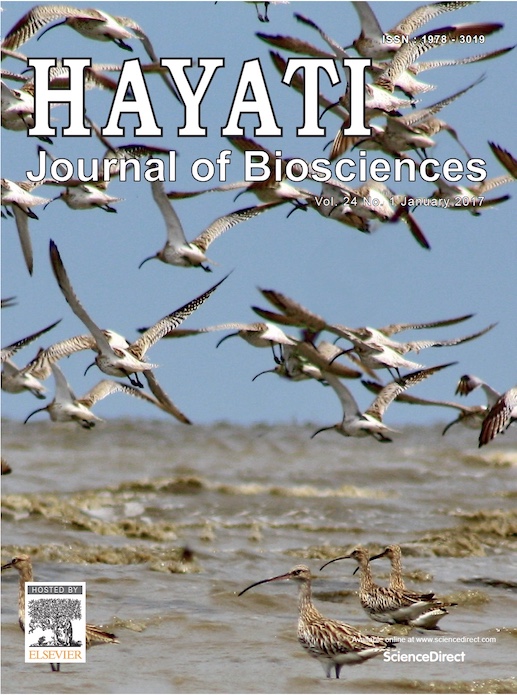Endophytic Fungi Associated With Turmeric (Curcuma longa L.) Can Inhibit Histamine-Forming Bacteria in Fish
Abstract
Turmeric (Curcuma longa L.) is a medicinal plant that is commonly used as spice and preservative. Many types of endophytic fungi have been reported as being associated with medicinal plants and able to synthesize secondary metabolites. In this study, endophytic fungi were isolated from all plant parts of turmeric plants. Identification of the endophytic fungi was done using morphological characteristics and sequencing of the internal transcribed spacer (ITS) region of ribosomal DNA. The dual culture method was used for screening antibacterial activity of the endophytic fungi against Morganella morganii, a common histamine-producing bacteria. The disc diffusion method was used to test the ability of water fractions of selected endophytic fungi to inhibit M. morganii growth. Two-dimensional thin layer chromatography was used to determine the fungal extract inhibition activity on histamine formation. In total, 11 endophytic fungi were successfully isolated and identified as Arthrobotrys foliicola, Cochliobolus kusanoi, Daldinia eschscholzii, Fusariumoxysporum, Fusarium proliferatum, Fusarium solani, Fusarium verticillioides, Phanerochaete chrysosporium, and Phaeosphaeria ammophilae. Five isolates showed inhibition activity against M. morganii in the dual culture tests. Based on the disc diffusion assay, A. foliicola and F. verticillioides inhibited the growth of M. morganii as a histamine-producing bacteria, and inhibiting histamine formation in fish. The best effects in inhibiting growth of the histamine-producing bacteria and histamine formation inhibition in fish were produced with F. verticillioides water fraction at 0°C incubation.Downloads
HAYATI J Biosci is an open access journal and the article's license is CC-BY-NC. This license lets others distribute, remix, tweak, and build upon author's work, as long as they credit the original creation. Authors retain copyright and grant the journal/publisher non exclusive publishing rights with the work simultaneously licensed under a https://creativecommons.org/


















.png) IPB University
IPB University Department of Biology
Department of Biology The Indonesian Biological Society
The Indonesian Biological Society 

